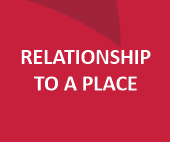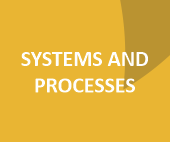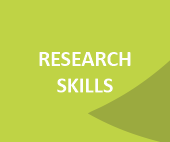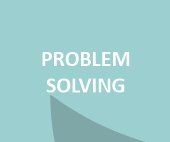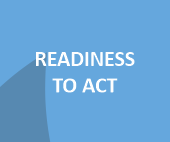DEFINITION OF THE COMPETENCE
In the SYSTEMS AND PROCESSES area, understanding of the workings of complex systems comprising people, other organisms and their environments as well as processes which take place in these systems are developed. The area is focused mainly on knowledge and represents the main content and knowledge part of the continuum. Responsible behaviour should not be random and emotional, but informed and lead by the striving for deep understanding of complex processes in nature and society. The area is built on developing system thinking, i.e., thinking about things and phenomena around us from the viewpoint of common principles and general rules. Nature, society and their parts are looked at as complex systems – ecological, social, and socio-ecological. The human body, organizations, villages, associations of plants and animals, climate, planet Earth, etc can all be considered systems. Aims target understanding core things that work within nature and social systems, not gaining knowledge of individual nature and social systems and processes.
HOW TO DEVELOP THE COMPETENCE
Understanding of individual systems and processes is part of subjects covering natural science and civics. These, however, do not usually focus on thinking within these systems. This concept would be best served by topic-oriented learning focused on one of the principles (e.g., change and development, or more specifically evolution and adaptability). With usual teaching of individual rules, some time should be spent on generalizing. While the area largely depends on a knowledge base, it should not be taught frontally. We recommend fully utilizing active learning methods, time spent observing nature and surroundings, research and working in the field. With secondary sources, work with methods connected with developing critical thinking. Various games like simulation games, eco-games, etc. can help understanding the complexity of systems.
|
THE STUDENT UNDERSTANDS THE CONCEPT OF THE SYSTEM |
||
|
|
Initial level |
Advanced level |
|
THE SYSTEM |
He/She gives simple examples of everything in nature (e.g. animal, tree, forest) and in society (family, city, school) that can be considered a system. He names significant parts of such system and explain how they are interconnected and how they work together. |
He/She gives examples of complex systems (ecological, social and socio-ecological) and their interaction - e.g. when one system is part of another (e.g. forest or another natural object in the city area). |
|
THE STUDENT UNDERSTANDS INTERCONNECTIONS AND DEPENDENCES |
||
|
|
Initial level |
Advanced level |
|
THE INDIVIDUAL |
He/She explores and describes simple examples based on |
He/She compares the needs of living organisms (including mental needs) and explains how they are satisfied in the environment. He uses examples to describe and explain how individual organisms, including human, affect their environment |
|
COEXISTENCE OF |
Based on his/her own research or observation, he/she discovers and explains the examples of coexistence and relationships between organisms and with inanimate components of the environment (specific mutually beneficial or unilaterally advantageous links, food chains and networks between specific organisms). |
He/She demonstrates typical forms of interconnection between organisms and between organisms and inanimate components of the environment (different types of coexistence of organisms, types of food chains, interconnectedness of the flow of materials, energy and information between organisms etc.) with suitable examples. The Student uses examples to explain the consequences of interfering in these links. |
|
FLOWS AND CYCLES |
He/She finds simple examples of the cycle of substances in life environment and explains how he is involved. |
He/She describes the cycle of an important substance (e.g. water) and the flow of solar energy through the environment and gives examples of consequences of human interference. |
|
RESOURCES AND |
He/She gives examples of natural resources. The student explains how to use and save them efficiently. Based on their own or mediated experience gives an example of significant environmental damage by people and the consequences of this damage. |
He/She compares renewable and non-renewable resources, the possibilities of using them and the impact of their use on |
|
LINKS IN GLOBALIZED WORLD |
He/She finds examples of how various everyday activities |
For specific phenomena in a globalized world (e.g. poverty, robotization, migration, climate change), he/she examines their causes and consequences, historical development and scenarios of further development. |
|
STUDENT UNDERSTANDS CHANGES AND DEVELOPMENTS |
||
|
|
Initial level |
Advanced level |
|
BIODIVERSITY |
He/She gives specific examples of the diversity of nature. He/She names and characterizes individual communities and compares them in terms of their biodiversity. |
He/She explains by using the examples how important the diversity in nature is for functioning of natural systems and for humans as well. He/She gives examples of reducing or endangering biodiversity and the possibilities and ways of its protection. |
|
HUMAN DIVERSITY |
Based on their own experience, the student describes how people are similar and different (e.g. in character, interests, experience, language, beliefs etc.) |
He/She describes examples of different historical and cultural developments in different parts of the world. He/She seeks causes affecting cultural identity, the form of coexistence and the way people live. |
|
THE STUDENT UNDERSTANDS CHANGES AND DEVELOPMENTS |
||
|
|
Initial level |
Advanced level |
|
EVOLUTION AND |
He/She describes on specific examples how organisms are adapting to their environment to survive best. |
He/She gives examples and describes gradual changes through many generations that led to the selection of the individuals who adapted best to life in the environment. |
|
DEVELOPMENT |
He/She looks for examples of changes in populations and ecosystems over time and finds out their causes. |
Using examples of specific organisms including humans, he/she explains how the state of populations can change under the influence of various factors. Then he/she explains how the ecosystem develops under settled conditions and how it develops in the event of a disturbance, as well as how it develops naturally and how in continuous human influence (succession process). |
|
DEVELOPMENT OF |
He/She gives examples of significant changes in nature and landscape caused by man. |
Using examples, he/she demonstrates how the use and condition of the landscape has changed in a region over time and how this development impacts the current state of nature and society. |
|
DEVELOPMENT |
He/She notices that the human community (including culture) is changing, He/She states the examples of significant changes over the last century and describes what new these changes have brought to the lives of people on Earth (e.g. the way of communication, method of production, transport, GPS, weapons). |
He/She gives examples of historical events that have significantly influenced the development of communities across different parts of the world (e.g. migration of nations, transition to agriculture, overseas discoveries, colonialism, industrial revolution, digital revolution). He/She explains what changes these events have brought to the development of the global community. |
|
STUDENT ACCEPTS UNCERTAINTY AND UNPREDICTABILITY |
||
|
|
Initial level |
Advanced level |
|
UNCERTAINTY |
On a specific example (e.g. weather), he/she realizes the limited ability to predict the future. He/She finds and describes more examples of such uncertainties in nature or society. |
He/She gives examples when human interventions brought the originally unforeseen consequences. He/She looks for and examines the causes of uncertainties and discusses them (e.g. delay between cause and effect, large impact of originally small stimuli). |
Lipka – školské zařízení pro environmentální vzdělávání Brno, příspěvková organizace, pracoviště Kamenná 20, Brno, telefon: 543 420 823, email: kamenna@lipka.cz, www.lipka.cz






